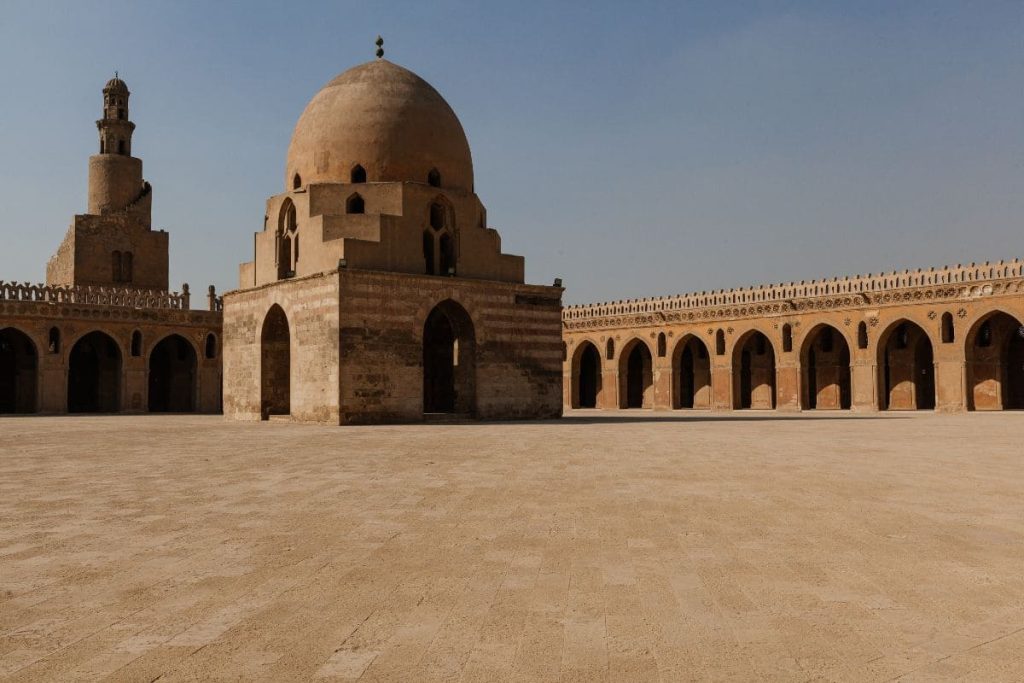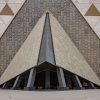Exploring Islamic Cairo: A Journey Through Time
Introduction to Islamic Cairo
Hey there, fellow traveler! If you’re a history buff or just someone who loves exploring epic old cities, you’re in for a treat with Islamic Cairo (Arabic: قاهرة المعز, romanized: Qāhira al-Muʿizz). Also known as Medieval Cairo or officially Historic Cairo (القاهرة التاريخية al-Qāhira tārīkhiyya), this part of Egypt’s capital is like stepping into a living, breathing history book. Must-Visit Islamic Places in Cairo will leave you absolutely mesmerized.
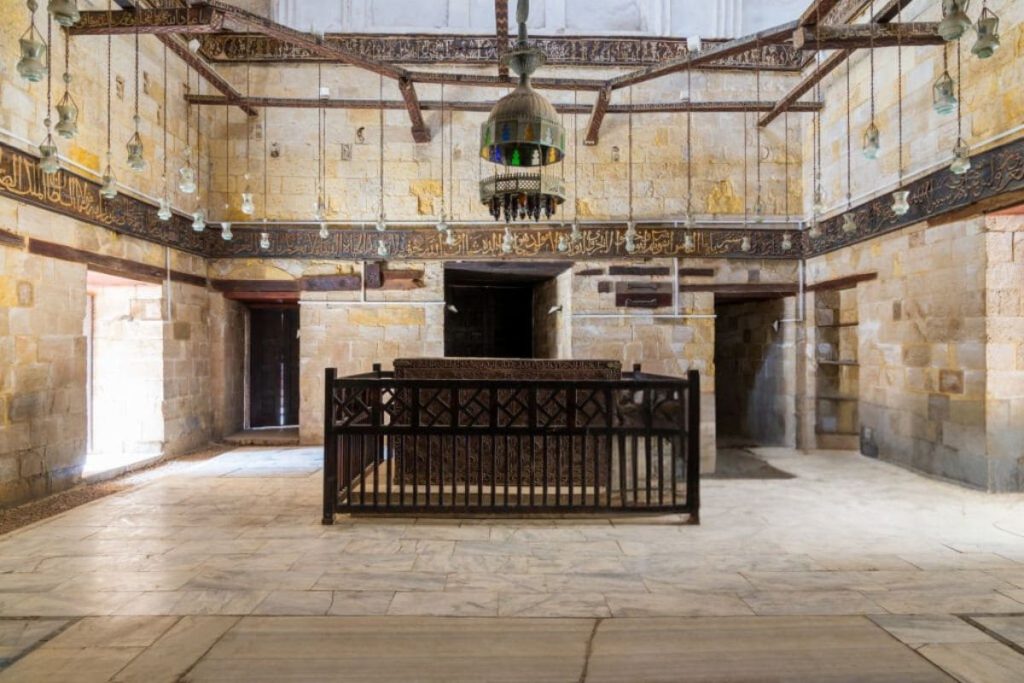
Historical Background
So, what exactly is Islamic Cairo? Picture this: an area that sprang to life with the Muslim conquest in 641 CE and continued to grow and evolve until the 19th century when Khedive Ismail gave it a modern twist. We’re talking about the heart of the old walled city, ancient cemeteries, the bustling surroundings of the Citadel of Cairo, parts of Bulaq, and even Old Cairo (Arabic: مصر القديمة, lit. ’Misr al-Qadima’) which goes way back to Roman times and is dotted with major Coptic Christian landmarks. How cool is that?
Amidst all this history, you’ll find top Islamic landmarks to explore in Cairo that showcase the city’s rich and diverse heritage.
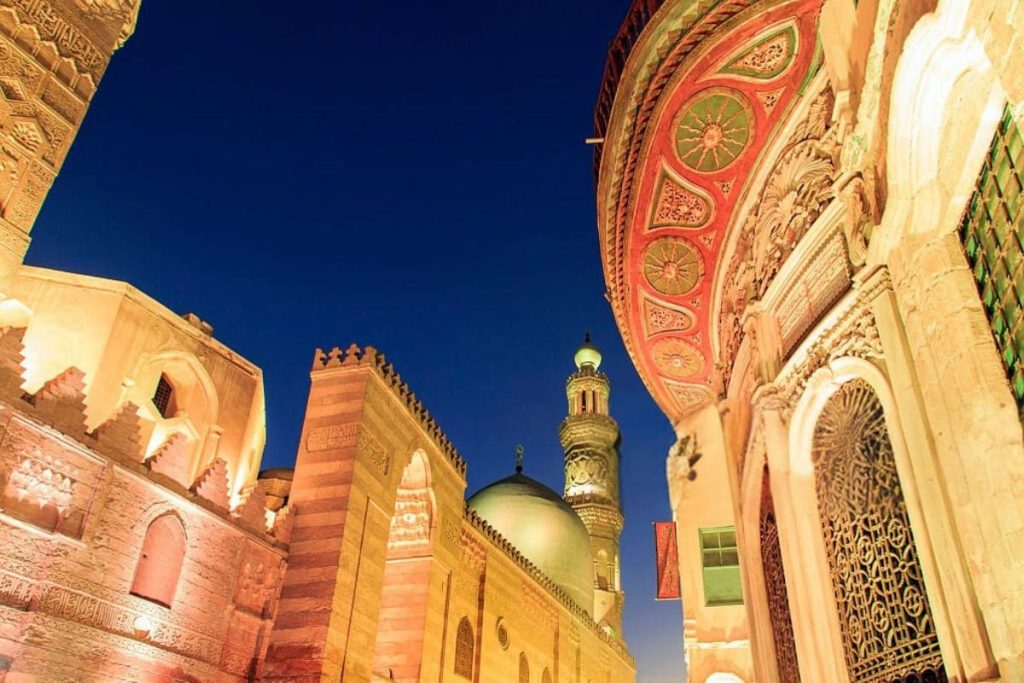
Misconceptions and Clarifications
Now, don’t let the name Islamic Cairo throw you off. It’s not about the number of mosques or Muslims here; it’s about the city’s incredible Islamic heritage that distinguishes it from nearby Ancient Egyptian sites like Giza and Memphis. Imagine wandering through streets with one of the densest concentrations of historic architecture in the Islamic world. We’re talking hundreds of mosques, tombs, madrasas (Islamic schools), grand mansions, caravanserais (inns for traders), and impressive fortifications. Each structure whispers stories from the past, just waiting for you to discover.
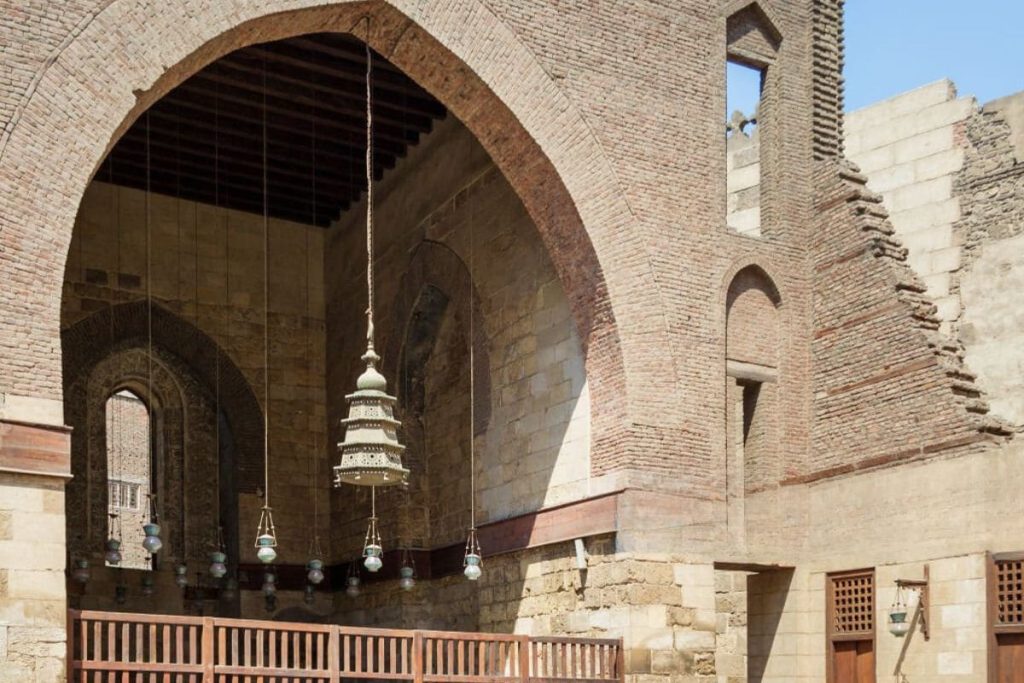
UNESCO World Heritage Site
Here’s a fun fact: In 1979, UNESCO declared Historic Cairo a World Cultural Heritage site. They called it “one of the world’s oldest Islamic cities, with its famous mosques, madrasas, hammams (bathhouses), and fountains,” and hailed it as “the new center of the Islamic world, reaching its golden age in the 14th century.” Can you imagine walking through a place that once was the epicenter of the Islamic world? It’s like having a foot in the present and another in the golden past.
Invitation to Explore
So, pack your bags, grab your camera, and get ready to lose yourself in the enchanting alleys of Islamic Cairo. Trust me, it’s an adventure you won’t forget!
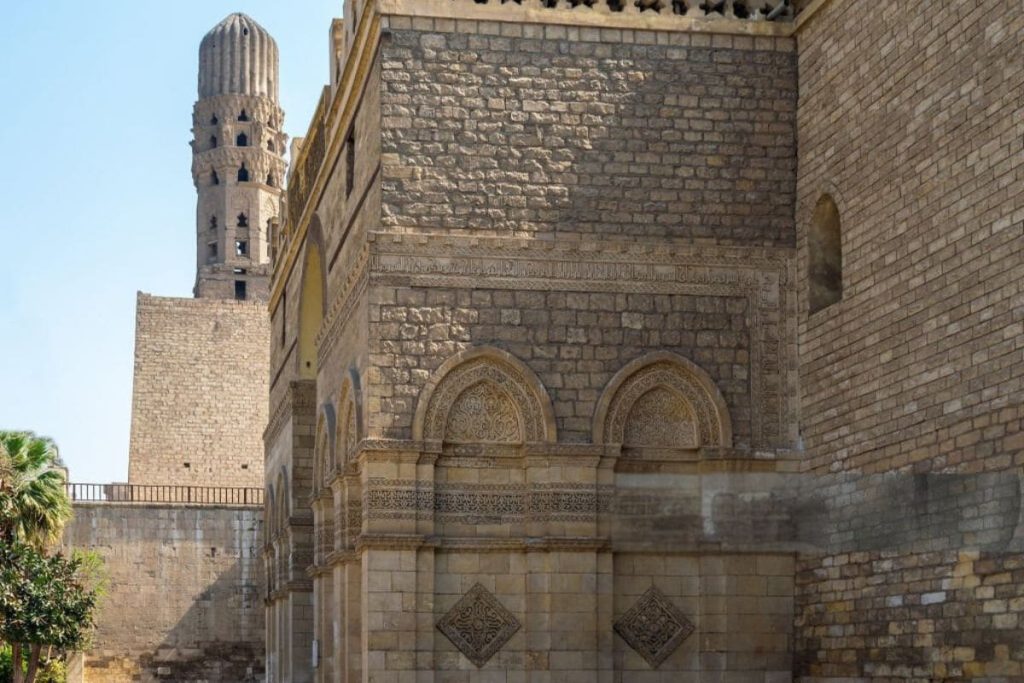
The Birth of Fustat
Picture this: it’s the year 640, and the Muslim Arabs, led by the formidable commander ‘Amr ibn al-‘As, have just conquered Egypt. Alexandria was the established capital, brimming with history from the Ptolemaic, Roman, and Byzantine eras. But the Arab conquerors had different plans. They wanted a fresh start and decided to establish a new city called Fustat.
Why Fustat? Its location was strategic, right near the ancient Roman-Byzantine fortress known as Babylon, in what we now call Old Cairo. This spot was perfect for several reasons:
- Proximity to Arabia and Mecca: This helped maintain strong ties with the heartland of Islam.
- Away from Alexandria’s Influences: Alexandria, despite its grandeur, was a hotbed of Christian and Hellenistic influences and vulnerable to attacks by sea – which the Byzantines did try!
- Strategic Control Point: Fustat was at the junction between Lower Egypt (the Nile Delta) and Upper Egypt (the Nile Valley further south). This made it a perfect control point for a country centered around the Nile.
This trend of founding new garrison cities inland wasn’t unique to Egypt; the Arabs did the same in places like Qayrawan in Tunisia and Kufa in Iraq.
The Rise of Fustat
Fustat wasn’t just about military strategy. It saw the birth of Egypt’s (and Africa’s) first mosque, the Mosque of ‘Amr ibn al-‘As. Though it’s been rebuilt many times over the centuries, it still stands today, a testament to the city’s historical significance.
Fustat quickly blossomed into Egypt’s main hub for trade and administration, while Alexandria took a backseat, becoming more provincial. Fast forward to 661, the Umayyads took over, ruling from Damascus until the Abbasids overthrew them in 750. The last Umayyad caliph, Marwan II, made a dramatic final stand in Egypt but was killed on August 1, 750. After this, Egypt and Fustat fell under Abbasid control
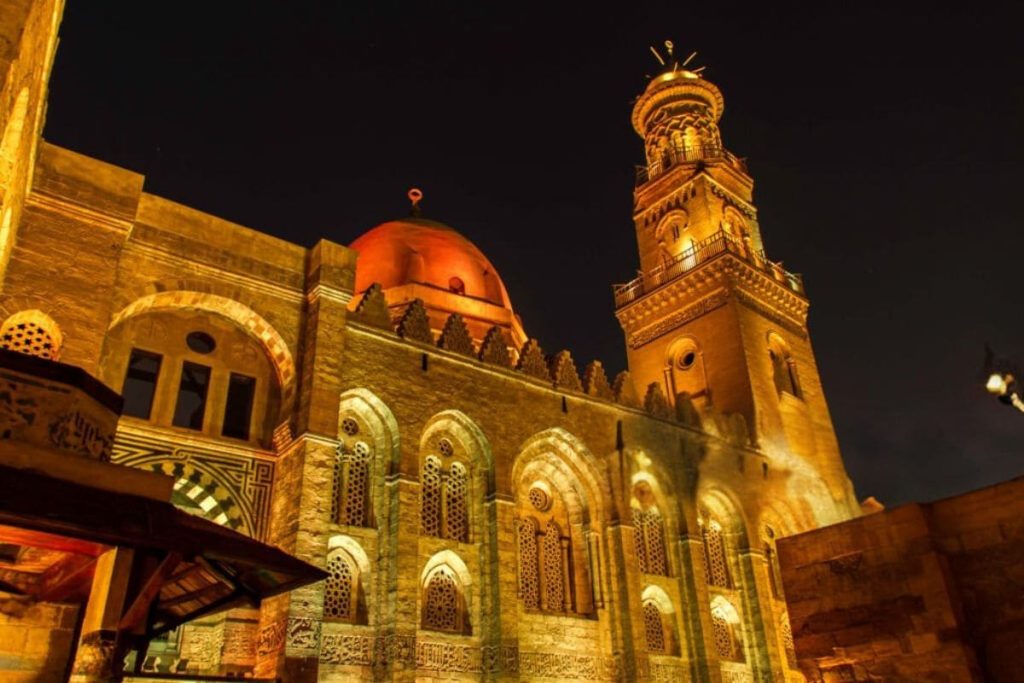
Al-'Askar: The Abbasid Era
The Abbasids marked their presence by founding a new capital called al-‘Askar, just a stone’s throw northeast of Fustat. This new city had a grand mosque and a palace for the governor, though nothing of it remains today. But this set a pattern: new rulers building new administrative centers next to the main city.
The Rise of Ahmad Ibn Tulun
Enter Ahmad Ibn Tulun, a Turkish military commander who became the de facto ruler of Egypt in 868. He made such a mark that he even controlled Syria for a while. During his rule, Egypt enjoyed a degree of independence it hadn’t seen since Roman times. Ibn Tulun founded yet another city, al-Qata’i, just northwest of al-‘Askar. It boasted a grand palace, a parade ground, amenities like a hospital, and the magnificent Mosque of Ibn Tulun, which still stands today.
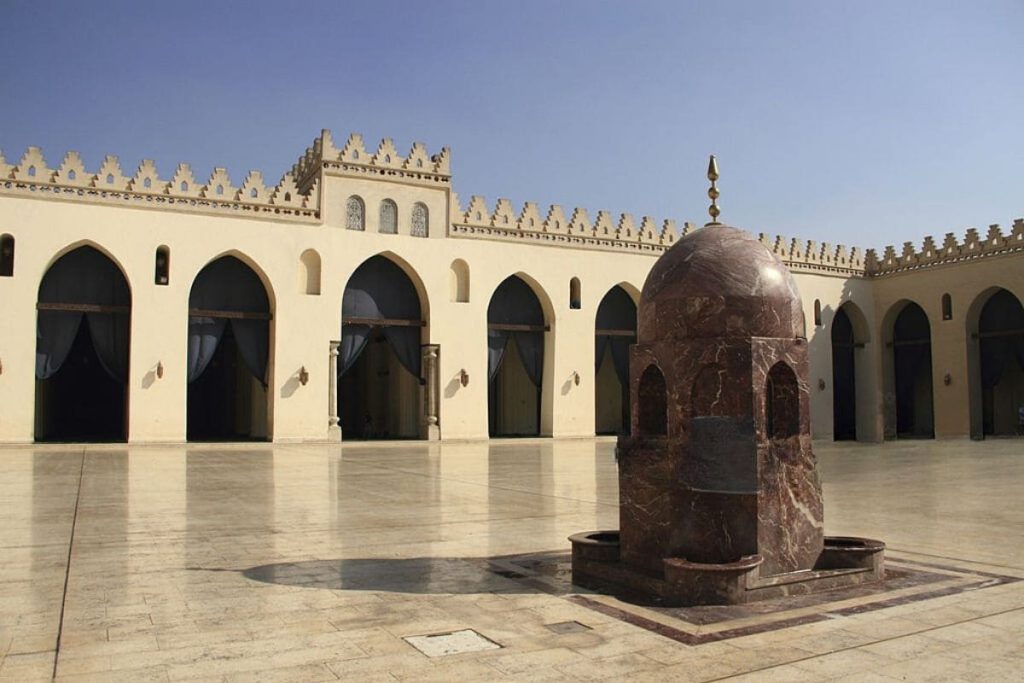
The Decline of Al-Qata'i and the Abbasid Resurgence
Ibn Tulun’s sons continued to rule after his death in 884, but in 905, the Abbasids reclaimed control and razed al-Qata’i, sparing only the mosque. Egypt then saw a new dynasty, the Ikhshidids, ruling as Abbasid governors until 969. Their constructions, especially under the regent Abu al-Misk Kafur, might have inspired the Fatimids when they later chose the site for their own capital, incorporating Kafur’s lush gardens into their grand designs.
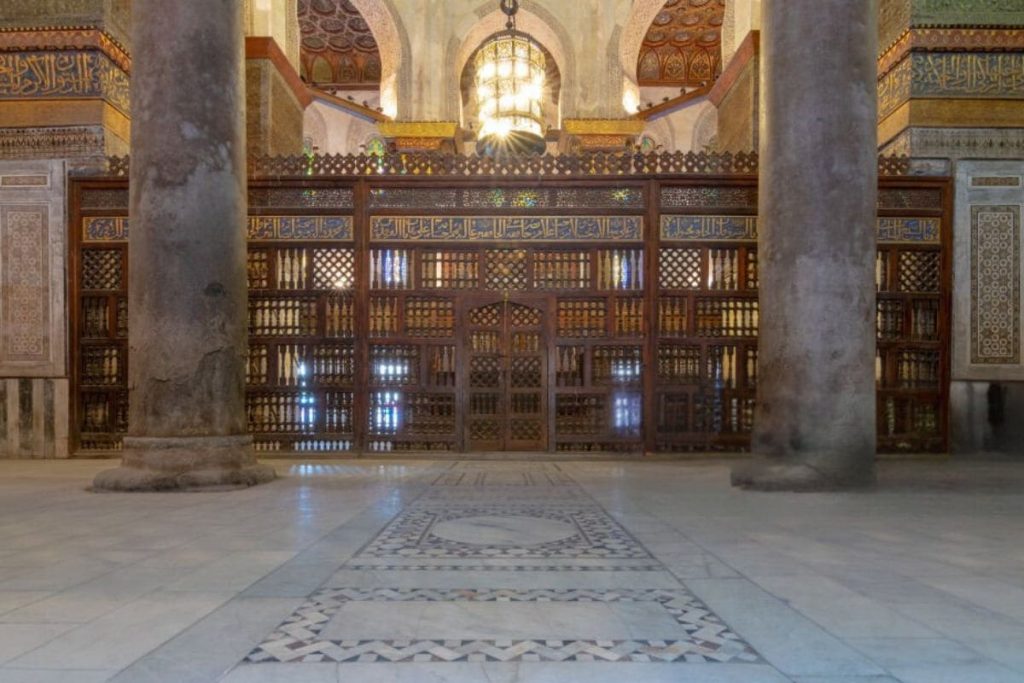
A Vibrant Tapestry of History
And there you have it – the vibrant and tumultuous early history of Cairo, from the birth of Fustat to the seeds of future dynasties. What an epic tale, right?
The Fatimids Conquer Egypt
Imagine this: it’s the year 969 CE, and Egypt is about to undergo an epic transformation. The Fatimids, an Isma’ili Shi’a caliphate hanging out in Ifriqiya (modern-day Tunisia), decide it’s time to conquer Egypt. Leading the charge is General Jawhar al-Siqilli, with an army of North African Kutama Berbers, all under the watchful eye of Caliph al-Mu’izz.
The Birth of Cairo
So, what do they do? They don’t just settle in; they plan and build a brand-new city! Jawhar, following al-Mu’izz’s orders, lays out the blueprint for al-Mu’izziyya al-Qaahirah, which means “The Victorious City of al-Mu’izz.” Today, we simply call it Cairo. Pretty cool, right?
Cairo’s location was strategic – it sat northeast of Fustat, the then-administrative hub. Jawhar made sure to place the Great Palaces at the heart of the city, creating a majestic home for the caliphs and their entourage. The eastern palace was the main attraction, but the western one had its charm too, with a bustling plaza called Bayn al-Qasrayn (“Between the Two Palaces”) connecting them.
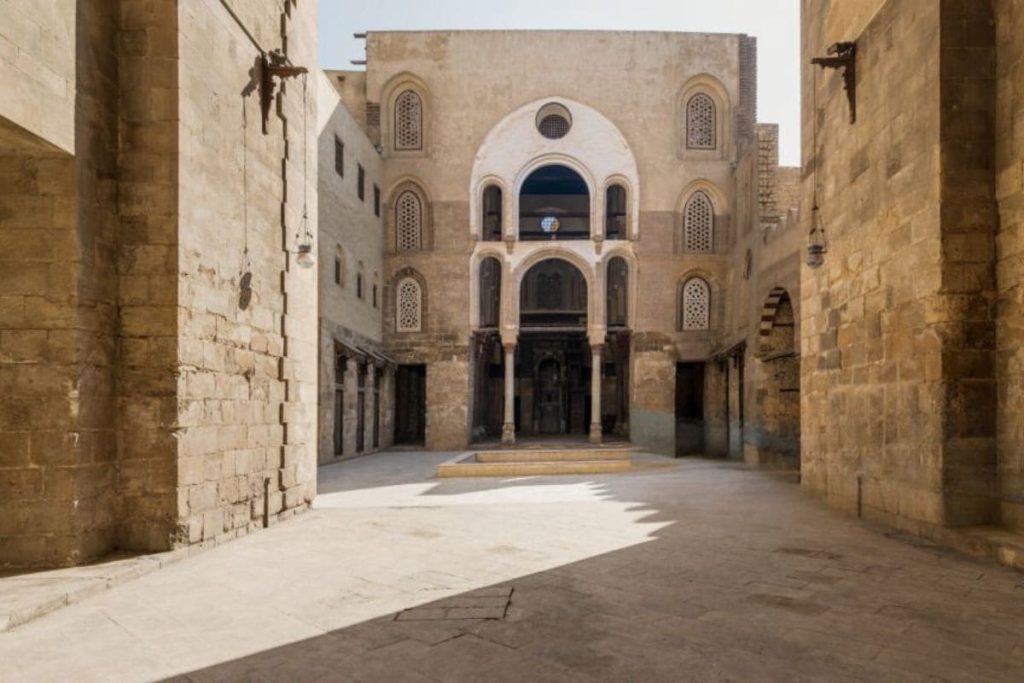
The Iconic Mosque of al-Azhar
And let’s not forget the iconic Mosque of al-Azhar, founded in 972. It wasn’t just a place for prayers; it became one of the world’s oldest universities. Talk about a legacy!
The Main Street: Al-Mu'izz li-Din Allah Street
The main drag, Al-Mu’izz li-Din Allah Street (historically the Qasabah), was the lifeline of Cairo, stretching from the northern gate (Bab al-Futuh) to the southern gate (Bab Zuweila), slicing through the palaces and buzzing with life. But here’s the kicker – Cairo was a royal city, off-limits to the common folk. Only the caliph’s family, officials, and essential personnel could live there. Fustat remained the main economic hub for a while until Cairo grew big enough to swallow it and other nearby cities.
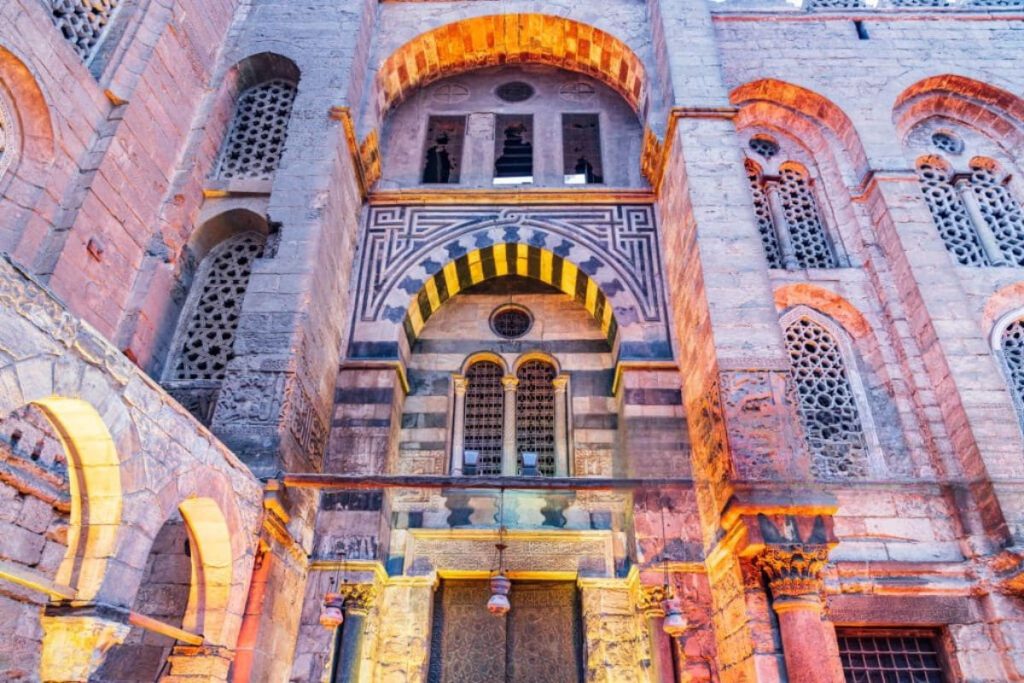
The Fatimid Empire's Peak and Decline
Fast forward to 972, and Caliph al-Mu’izz moves his capital from Mahdia, Tunisia, to Cairo, arriving in June 973. The Fatimid Empire reaches its zenith under Caliph al-Mustansir (1036–1094), even though his reign also sees the start of its decline. Yet, some strong viziers like the Armenian Badr al-Jamali manage to give the empire a few more years of glory, even rebuilding Cairo’s walls with massive gates that still stand today.
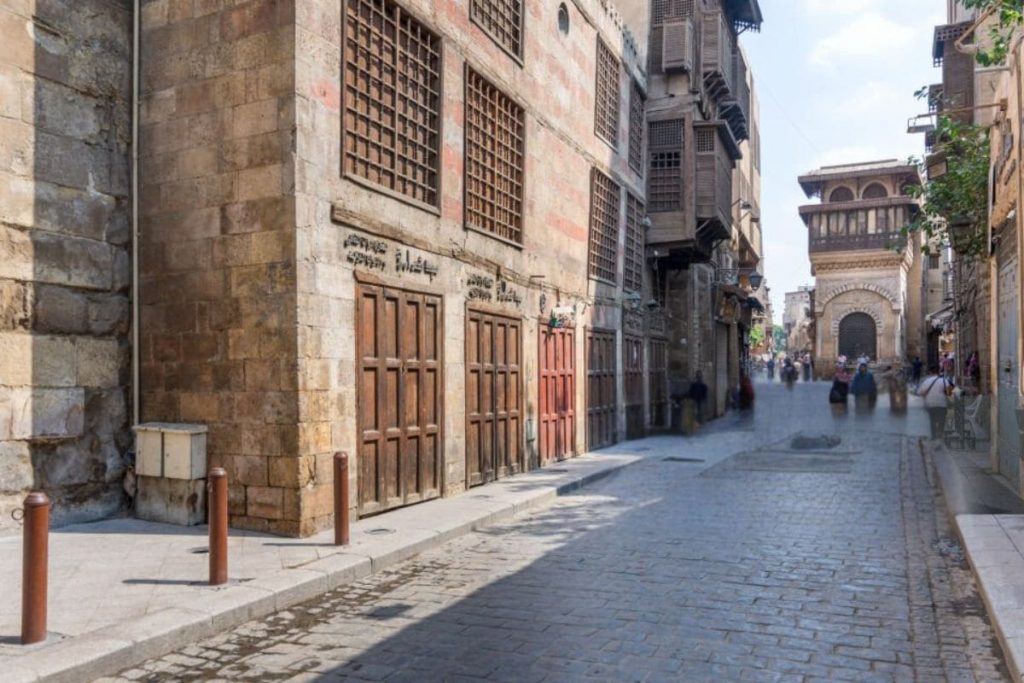
Challenges from the Great Seljuk Empire and the Crusades
But the 11th century was a turbulent time. The Great Seljuk Empire, full of Sunni Muslims, took over much of the eastern Islamic world, leading to a “Sunni Revival” that pushed back against the Fatimids. Then, in 1099, the First Crusade captured Jerusalem, adding a new layer of complexity to the region’s politics. Leaders like Nur al-Din from the Turkish Zengid dynasty took charge in the Muslim fight against the Crusaders.
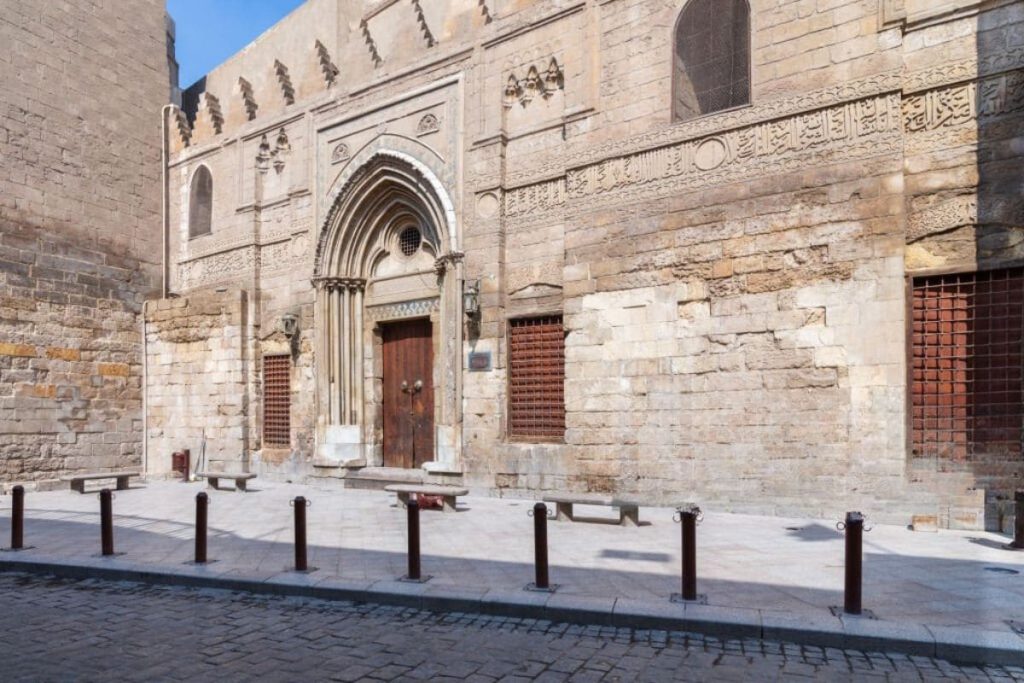
The End of the Fatimid Caliphate
By the 12th century, the Fatimids were in a tough spot. The last Fatimid Caliph, al-‘Adid, found himself asking the Zengids for help against the King of Jerusalem, Amalric, while also trying to play both sides. In 1168, as the Crusaders closed in on Cairo, the Fatimid vizier Shawar, fearing that Fustat would be used to launch an attack on Cairo, ordered its evacuation and set it ablaze. While historians debate the extent of the destruction, this marked a significant decline for Fustat.
Salah ad-Din (Saladin) and the New Chapter for Cairo
Enter Salah ad-Din (Saladin), a Zengid commander. In 1171, he declared the end of the Fatimid Caliphate and reestablished Sunni rule. This was a turning point, opening a new chapter in Cairo’s vibrant history.
Cairo's Transformation Under the Ayyubid Dynasty
Imagine this: Cairo, once a grand palace-city, starts transforming into a bustling urban hub during the reign of Salah ad-Din (Saladin). He initiated the Ayyubid dynasty, ruling Egypt and Syria, and played a crucial role in the fight against the Crusaders. One of his most epic achievements was building the magnificent Citadel (now known as the Citadel of Cairo), further south of the walled city. This Citadel served as the residence for Egypt’s rulers and the center of state administration for centuries. Thanks to these changes, Cairo became accessible to common Egyptians and foreign travelers, blossoming into an economic powerhouse.
As Cairo thrived, the neighboring city of Fustat declined, paving the way for Cairo’s rise. The Ayyubid sultans and their successors, the Mamluks, were keen to erase the Shi’a Fatimid legacy. They replaced the grand Fatimid palaces with their own impressive structures and transformed the Al-Azhar Mosque into a Sunni institution, which remains a leading center for Sunni Islamic studies today.
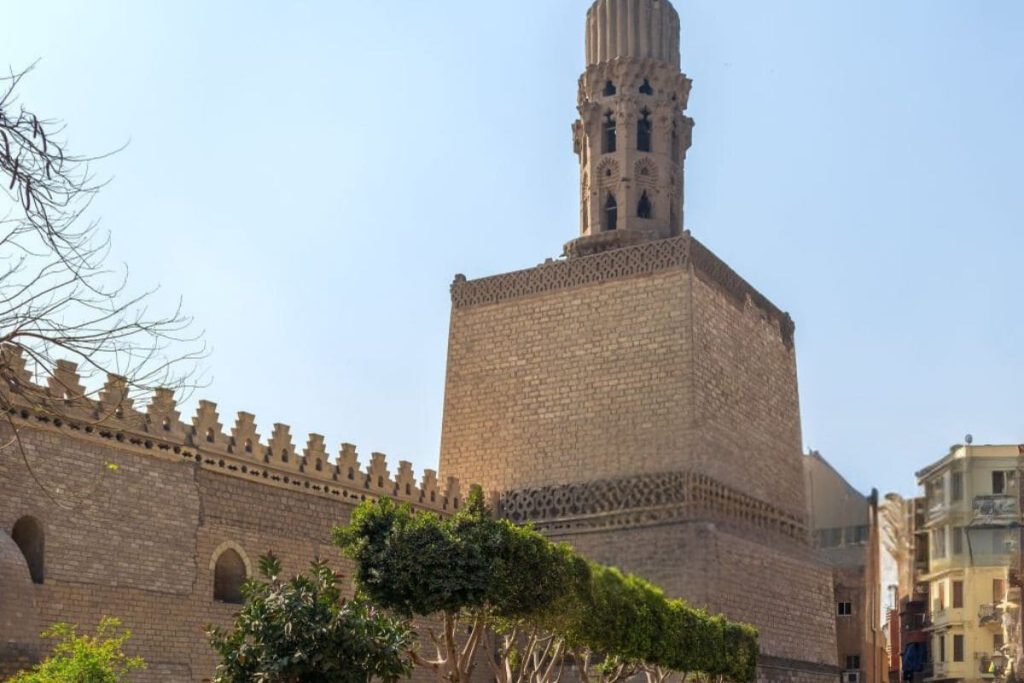
The Rise of the Mamluks
Fast forward to 1250: the Ayyubid dynasty stumbled, and the Mamluks, once young slaves turned elite soldiers, seized power. From 1250 to 1517, these rulers, known for their military prowess, controlled the state in a succession often marked by chaos and violence. Despite this, they upheld many Ayyubid traditions, famously repelling the Mongols in 1260 and ending the Crusader states in the Levant.
Under Sultan al-Nasir Muhammad’s reign (1293–1341), Cairo reached its peak in population and wealth, with some estimates suggesting a population of around 500,000, making it the largest city outside China at the time. The Mamluks, despite their focus on military matters, were prolific builders, leaving behind many of Cairo’s most impressive historical monuments. The city flourished as a crucial trade hub between the Indian Ocean and the Mediterranean.
Challenges and Resilience
However, post-al-Nasir, Cairo faced several waves of the plague, starting with the Black Death in the mid-14th century, leading to a population decline that took centuries to recover from. Despite this, Cairo remained the major metropolis of the Middle East.
Economic and Urban Development
During the Ayyubid and Mamluk periods, Qasaba avenue became the hotspot for religious complexes, royal mausoleums, and commercial establishments, thanks to sponsorships from sultans and the elite. This area developed into Cairo’s main economic zone, bustling with international trade. When space ran out, new commercial centers sprang up near the al-Azhar Mosque and the shrine of al-Hussein, eventually forming the famous Khan al-Khalili souq we know today.
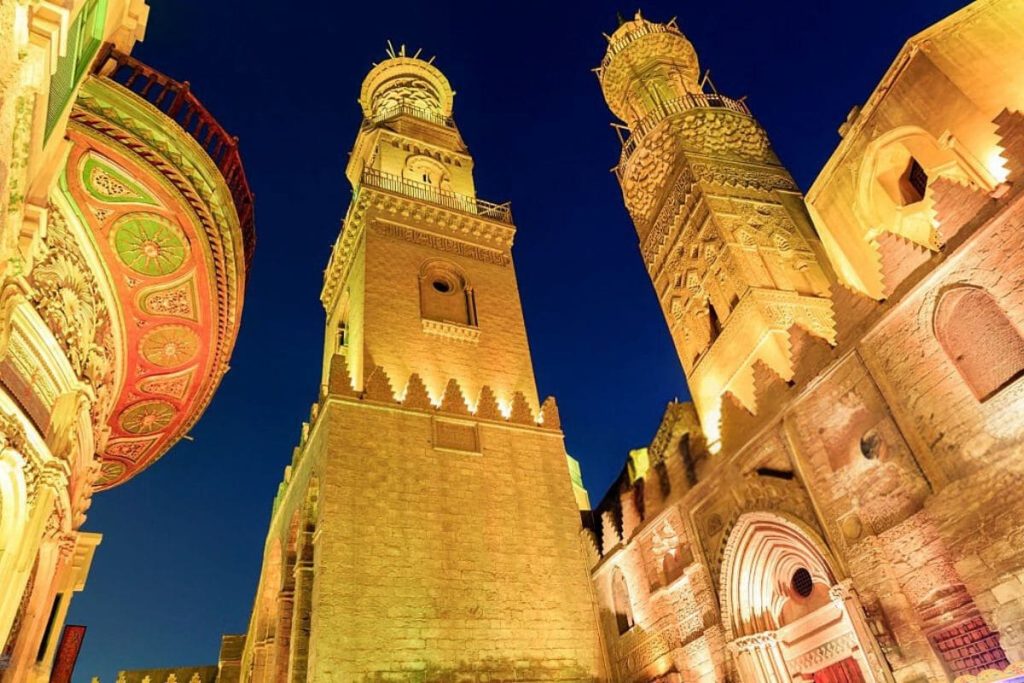
Waqf Establishments and Urban Character
A key factor in Cairo’s unique urban character was the proliferation of waqf establishments, especially during the Mamluk era. These charitable trusts funded religious and civic buildings, combining functions like mosques, madrasas, mausoleums, and public fountains, often supported by revenues from urban and rural properties. By the late 15th century, Cairo even boasted high-rise mixed-use buildings, with the lower floors used for commerce and storage, and the upper floors rented out to tenants.
Cairo's Transformation Under Salah ad-Din
Imagine this: Cairo, once a grand palace-city, transforming into a bustling urban hub during the reign of Salah ad-Din. He started the Ayyubid dynasty, which ruled Egypt and Syria, and played a crucial role in the fight against the Crusaders. One of his most epic achievements was building the magnificent Citadel (now known as the Citadel of Cairo) further south of the walled city. This Citadel served as the residence for Egypt’s rulers and the center of state administration for centuries. Thanks to these changes, Cairo became accessible to common Egyptians and foreign travelers, blossoming into an economic powerhouse.
Decline of Fustat and Rise of Cairo
As Cairo thrived, the neighboring city of Fustat declined, paving the way for Cairo’s rise. The Ayyubid sultans and their successors, the Mamluks, were keen to erase the Shi’a Fatimid legacy. They replaced the grand Fatimid palaces with their own impressive structures and transformed the Al-Azhar Mosque into a Sunni institution, which remains a leading center for Sunni Islamic studies today.
Mamluk Seizure of Power
Fast forward to 1250, the Ayyubid dynasty stumbled, and the Mamluks, once young slaves turned elite soldiers, seized power. From 1250 to 1517, these rulers, known for their military prowess, controlled the state in a succession often marked by chaos and violence. Despite this, they upheld many Ayyubid traditions, famously repelling the Mongols in 1260 and ending the Crusader states in the Levant.
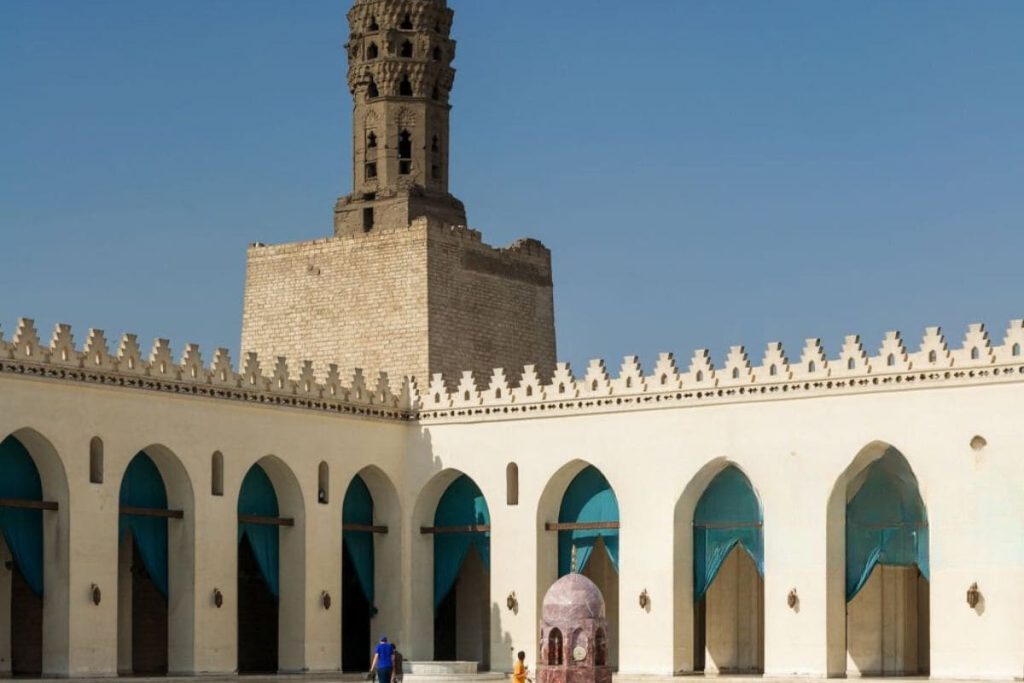
Cairo's Golden Age Under Sultan al-Nasir Muhammad
Under Sultan al-Nasir Muhammad’s reign (1293–1341), Cairo reached its peak in population and wealth, with some estimates suggesting a population of around 500,000, making it the largest city outside China at the time. The Mamluks, despite their focus on military matters, were prolific builders, leaving behind many of Cairo’s most impressive historical monuments. The city flourished as a crucial trade hub between the Indian Ocean and the Mediterranean.
Challenges and Resilience
However, post-al-Nasir, Cairo faced several waves of the plague, starting with the Black Death in the mid-14th century, leading to a population decline that took centuries to recover from. Despite this, Cairo remained the major metropolis of the Middle East.
Development of Qasaba Avenue
During the Ayyubid and Mamluk periods, Qasaba avenue became the hotspot for religious complexes, royal mausoleums, and commercial establishments, thanks to sponsorships from sultans and the elite. This area developed into Cairo’s main economic zone, bustling with international trade. When space ran out, new commercial centers sprang up near the al-Azhar Mosque and the shrine of al-Hussein, eventually forming the famous Khan al-Khalili souq we know today.
The Role of Waqf Establishments
A key factor in Cairo’s unique urban character was the proliferation of waqf establishments, especially during the Mamluk era. These charitable trusts funded religious and civic buildings, combining functions like mosques, madrasas, mausoleums, and public fountains, often supported by revenues from urban and rural properties. By the late 15th century, Cairo even boasted high-rise mixed-use buildings, with the lower floors used for commerce and storage, and the upper floors rented out to tenants.
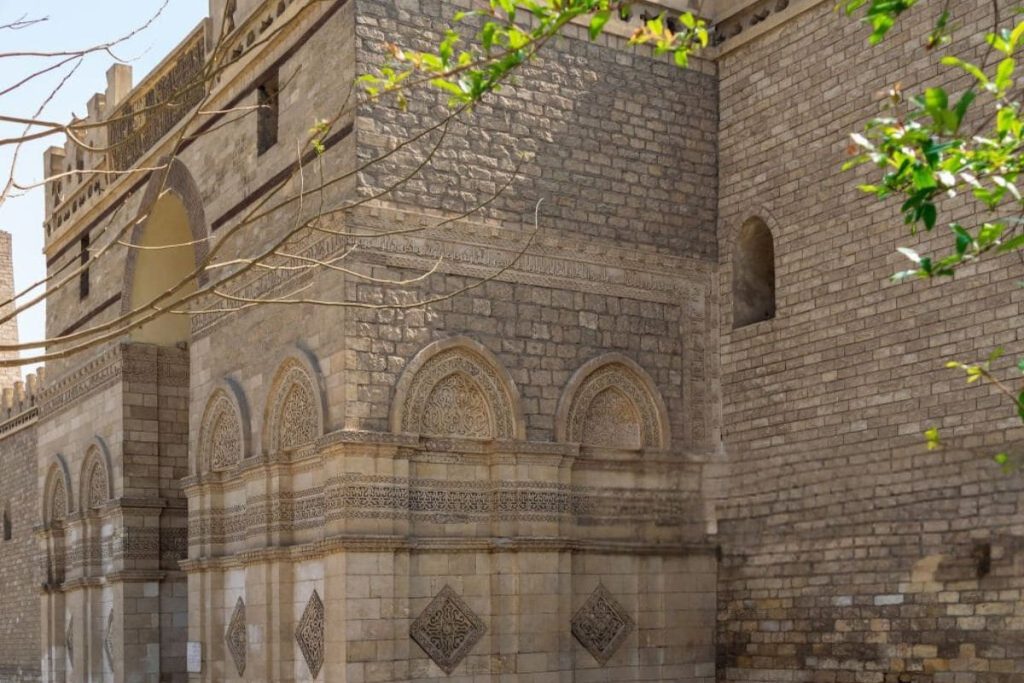
Cairo under Muhammad Ali Pasha and the Khedives
Alright, let's dive into a fascinating chapter of Cairo's history!
Picture this: it’s the late 18th century, and Napoleon’s French army swoops into Egypt, sticking around from 1798 to 1801. After they left, an Albanian officer in the Ottoman army named Muhammad Ali Pasha took over. He turned Cairo into the capital of an independent empire from 1805 to 1882.
Under Muhammad Ali’s rule, the Citadel of Cairo got a major facelift. He knocked down many of the old Mamluk monuments to make space for his new projects, including the stunning Mosque of Muhammad Ali and various palaces. His reign marked the introduction of a more distinctly Ottoman style of architecture, characterized by the late Ottoman Baroque style.
Fast forward a bit, and we meet one of his grandsons, Isma’il. As Khedive from 1864 to 1879, Isma’il was quite the visionary. He oversaw the construction of the modern Suez Canal and embarked on an ambitious project to build a vast new city to the north and west of historic Cairo. Inspired by Haussmann’s transformation of Paris, this new city featured grand boulevards and squares. While Isma’il’s grand vision was never fully realized, this area forms much of what we know as Downtown Cairo today.
Unfortunately, the old historic districts, including the walled city, fell into neglect. Even the Citadel lost its status as the royal residence when Isma’il moved to the new Abdin Palace in 1874.
So, there you have it! A whirlwind tour of Cairo’s transformation under Muhammad Ali Pasha and the Khedives, blending grand architectural visions with the rich tapestry of the city’s history. What more could you want from a city with such epic stories?
Historic Sites and Monuments: Mosques
When you think of historic mosques in Egypt, you’re in for a real treat. Let’s kick things off with the Mosque of Amr ibn al-As in Fustat, which happens to be Egypt’s very first mosque. But if you’re after something that has truly stood the test of time in its original form, then the Mosque of Ibn Tulun is where you want to be. Built between 876-879 AD, this gem is a fantastic example of Abbasid architecture from the classical period of Islamic civilization. Inspired by the Abbasid capital of Samarra in Iraq, it stands as one of Cairo’s largest and most stunning mosques.
Now, let’s talk about another jewel from the Fatimid period: the Mosque of al-Azhar, founded in 970 AD. This mosque is in a friendly rivalry with the Qarawiyyin in Fes for the title of the world’s oldest university. Today, al-Azhar University is a global leader in Islamic learning and one of Egypt’s largest universities, with campuses scattered across the country. The mosque itself retains much of its original Fatimid charm but has seen additions and expansions over the centuries, especially by the Mamluk sultans Qaitbay and al-Ghuri, and by Abd al-Rahman Katkhuda in the 18th century.
Other notable mosques from the Fatimid era include the grand Mosque of al-Hakim, the al-Aqmar Mosque, Juyushi Mosque, Lulua Mosque, and the Mosque of Salih Tala’i. However, the most prominent architectural heritage in medieval Cairo comes from the Mamluk period (1250-1517 AD). The Mamluk sultans and elites were huge patrons of religious and scholarly life, often building large religious or funerary complexes. These complexes could include a mosque, madrasa, khanqah (a place for Sufis), water distribution centers (sabils), and mausoleums for themselves and their families.
Some standout Mamluk monuments in Cairo are the immense Mosque-Madrasa of Sultan Hasan, the Mosque of Amir al-Maridani, and the Mosque of Sultan al-Mu’ayyad with its twin minarets built above the Bab Zuwayla gate. You definitely don’t want to miss the Sultan Al-Ghuri complex, the funerary complex of Sultan Qaytbay in the Northern Cemetery, and the trio of monuments in the Bayn al-Qasrayn area: the complex of Sultan al-Mansur Qalawun, the Madrasa of al-Nasir Muhammad, and the Madrasa of Sultan Barquq. It’s fascinating to see how some mosques include spolia (reused building materials) from earlier Roman, Byzantine, or Coptic buildings.
Exploring these historic mosques is like taking a walk through time, with each structure telling its own unique story. What more could you want for an epic adventure through Egypt’s rich history?
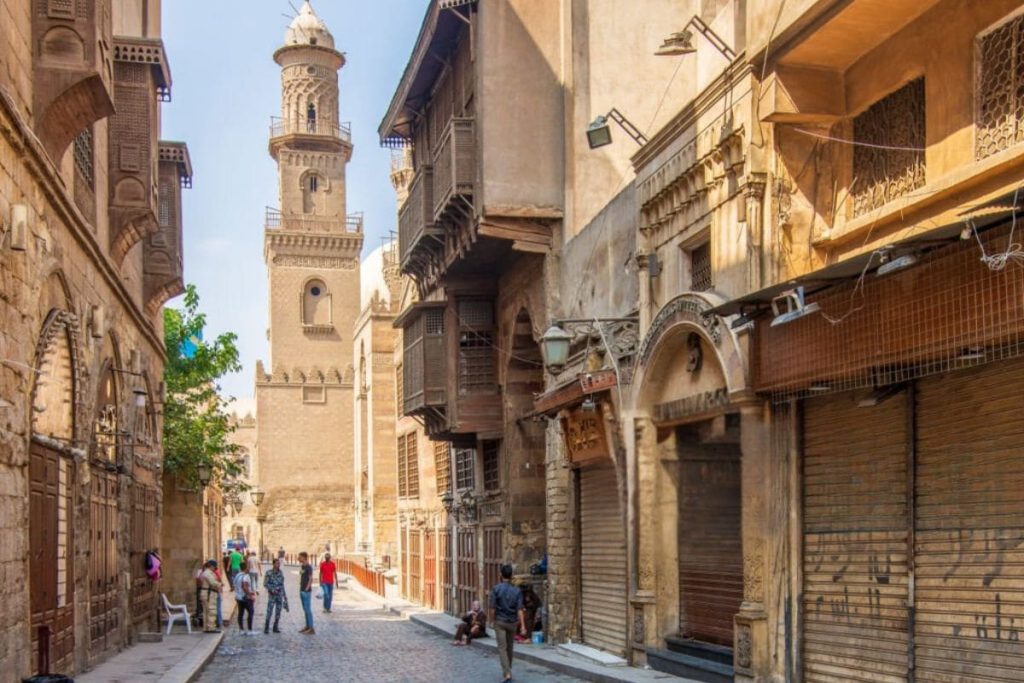
Shrines and Mausoleums: A Journey Through Islamic Cairo
When you step into Islamic Cairo, you’re not just walking through a city; you’re diving into centuries of history and spirituality. This place is packed with sacred shrines and mausoleums that are seriously cool.
First up, let’s talk about the al-Hussein Mosque. It’s believed to house the head of Husayn ibn Ali, which makes it a super significant spot for many pilgrims. Just think about the history within those walls! Next, there’s the Mausoleum of Imam al-Shafi’i. This scholar was no ordinary guy; he founded the Shafi’i madhhab, one of the main schools of thought in Sunni Islamic jurisprudence. Pretty epic, right?
But there’s even more to discover! The Tomb of Sayyida Ruqayya and the Mosque of Sayyida Nafisa are also tucked away here, each with its own unique story and spiritual importance.
Many of these shrines are hidden in the vast cemetery areas known as the City of the Dead, or al-Qarafa in Arabic. These cemeteries have been around since the foundation of Fustat, the first capital of Islamic Egypt. Imagine wandering through these ancient graveyards, where the grandest and most famous mausoleums were built during the Mamluk era. It’s like stepping into another world, where every stone whispers tales from the past.
So, if you’re up for an adventure that mixes deep history with spiritual exploration, Islamic Cairo’s shrines and mausoleums are calling your name. What more could you want?
Walls and Gates: The Story of Cairo's Ancient Fortifications
City Walls
Imagine this: It’s 969 AD, and Cairo is just starting to take shape. Under the leadership of the Fatimid Caliphate’s general, Gawhar al-Siqilli, the city’s original walls were constructed from mudbrick, marking the boundaries of this fledgling palace-city. Fast forward to the late 11th century, and you’ll find the Fatimid vizier Badr al-Gamali giving those walls a major upgrade. He rebuilt them with stone, expanding the city’s boundaries. Pretty cool, right?
Badr al-Gamali, with his Armenian background, brought some unique design elements to Egypt’s Islamic military architecture. The walls had three levels: the lower level was elevated above the street and housed gate vestibules accessible by ramps. The second level had halls connecting different galleries and rooms, while the third level was a terrace protected by parapets. Near the gates, belvederes (fancy viewing platforms) were built for the caliph and his court. Recent archaeological discoveries reveal that while the gates were stone, some parts of the eastern wall were still made of mudbrick. Since 1999, the preserved northern section of these walls has been cleared of debris and is now part of an urban regeneration project.
Jump ahead to the 12th century, and you’ll find Salah ad-Din (the founder of the Ayyubid dynasty) restoring and expanding these walls. He reconstructed parts of the Fatimid walls, including the eastern wall, and in 1176, he embarked on an ambitious project to fortify the city further. This included building the iconic Citadel of Cairo and a 20-kilometer wall to protect both Cairo and Fustat, the earlier capital of Egypt.
Although not all of the envisioned walls were completed, significant sections were built, including parts north of the Citadel and near Fustat. By 1185-86, work around Fustat was underway, and by 1192, trenches for the eastern fortifications were being dug. After Salah ad-Din’s death, his successors continued the work. By 1200, more walls were ordered, and by 1218, several sections were completed. Even by 1238, construction was still ongoing.
So, next time you’re wandering through Cairo, remember the epic story behind those ancient walls and gates. They aren’t just stones and bricks; they’re chapters in the city’s incredible history.

The Gates of Fatimid Cairo: A Journey Through History
Alright, let’s jump into the fascinating world of Fatimid Cairo’s gates! Picture this: once upon a time, the walls of this historic city were lined with numerous gates, but today, only three remain: Bab al-Nasr, Bab al-Futuh, and Bab Zuwayla. (“Bab” means “gate,” by the way.)
From 2001 to 2003, these gates received a much-needed makeover, along with parts of the northern wall between Bab al-Nasr and Bab al-Futuh. Back in the day, lush gardens ran alongside these walls, adding a touch of green to the cityscape. Bab al-Nasr and Bab al-Futuh are pretty close to each other, just about 200 yards apart.
Bab al-Nasr – “The Gate of Victory”
Bab al-Nasr, which translates to “the Gate of Victory,” was originally called Bab al-Izz, or “the Gate of Glory,” when it was built by Gawhar al-Siqilli. Badr al-Gamali later reconstructed it between 1087 and 1092, moving it about 200 meters from its original spot and renaming it. This gate is flanked by two square towers with shield insignias carved into the stone. Inside, you’ll find innovative vaulted stone ceilings, featuring the first helicoidal vaults in this architectural context. The façade boasts a frieze with Kufic inscriptions in white marble, including a foundation inscription and the Shi’a version of the Shahada, reflecting the Fatimid caliphate’s religious beliefs.
Bab al-Futuh – “The Gate of Conquest”
Originally named Bab al-Iqbal, or “the Gate of Prosperity,” this gate was also renamed Bab al-Futuh by Badr al-Gamali. It’s flanked by round towers and, while it doesn’t have inscriptions on the gate itself, there’s one nearby on the northern minaret of the al-Hakim Mosque. Inside, through the eastern flanking doorway, lies the tomb of an unidentified figure, and through the western flanking doorway, a long vaulted chamber.
Bab Zuwayla – A Southern Gem
Bab Zuwayla sits in the southern section of the wall. Rebuilt by Badr al-Gamali further south than its original position, this gate is adjacent to the mosque of al-Mu’ayyad Shaykh, which has two minarets perched on top of its towers. Like its northern counterparts, Bab Zuwayla was surrounded by gardens, including those of Qanṭara al-Kharq.
In 1998, another gate from the eastern city walls, part of the Ayyubid reconstruction, was uncovered and studied. This gate, with its complex defensive layout, including a bent entrance and a bridge over a moat, was initially identified as Bab al-Barqiyya. However, it might have actually been known as Bab al-Jadid (“New Gate”), one of the three eastern gates mentioned by the historian al-Maqrizi. The gate discovered in the 1950s, dating back to Badr al-Gamali’s time, was also called Bab al-Tawfiq (“Gate of Success”) according to an inscription. Interestingly, archeologists found ancient stones with Pharaonic inscriptions reused in its construction.
These gates not only serve as historical landmarks but also as gateways to the rich and complex history of Cairo. They are perfect examples of how architecture can tell the story of a city’s past, its rulers, and its cultural shifts. So next time you’re in Cairo, make sure to check them out – they’re like stepping into a time machine!
Exploring the Epic Cairo Citadel
Picture this: it’s 1176, and Salah ad-Din, famously known as Saladin, kicks off an epic project to build a sprawling Citadel that would become the heart of Egypt’s power. Nestled atop the Muqattam Hills, this fortress offers views that are nothing short of spectacular. Imagine yourself standing there, taking in the sweeping panorama of Cairo spread out below!
Though Saladin started the construction, it was his successors who completed this incredible Citadel. For centuries, it served as the official residence of Egypt’s rulers, all the way up to the late 19th century. Can you imagine the grandeur and the buzz of centuries of leadership within these ancient walls?
A highlight of the Citadel is the Mosque of Muhammad Ali, constructed in the 19th century by Muhammad Ali Pasha. This stunning mosque, with its grand domes and towering minarets, still stands tall on Cairo’s skyline. It’s a must-see when you visit the city, offering not only a deep dive into history but also an unbeatable view of Cairo. Seriously, what more could you want?
Markets and Commercial Buildings
Hey there! Let’s take a little trip to the heart of Cairo, where the city’s history and culture come alive. Picture the bustling streets, filled with the energy of trade and commerce. Way back when, the Mamluks and Ottomans really knew how to keep the economy buzzing—they built these cool places called wikalas (or caravanserais or khans) for merchants and their goods. One of the best-preserved gems is the Wikala al-Ghuri. Today, it’s not just a historical treasure but also a lively spot where the Al-Tannoura Egyptian Heritage Dance Troupe puts on regular performances. How cool is that?
And you can’t miss the legendary Khan al-Khalili! This isn’t just any market—it’s an experience. A maze of shops and stalls that just pulls you in. They even integrated caravanserais into this vibrant market scene, making it a must-visit.
Now, let’s stroll over to the 17th-century Qasaba of Radwan Bay, part of the charming al-Khayamiyya area. “Al-Khayamiyya” gets its name from the gorgeous decorative textiles (khayamiyya) you can still find today. It’s a perfect blend of history and living culture, offering a colorful peek into Cairo’s rich commercial past and present. Seriously, what more could you want from a shopping trip?
Dive Into the Rich History of Cairo with These Awesome Resources
- UNESCO’s Historic Cairo Maps – Check them out on the UNESCO World Heritage Centre website (Retrieved Feb 19, 2023).
- Islamic Monuments in Cairo: The Practical Guide by Caroline Williams – A must-have guide from the American University in Cairo Press (7th ed., 2018).
- Islamic Cairo in Cairo, Egypt – Find all the cool spots on Lonely Planet (Retrieved Nov 18, 2019).
- UNESCO Decision Text – Dive into the World Heritage Centre’s details (Retrieved July 21, 2017).
- Le Caire by André Raymond – A comprehensive look at Cairo’s history (1993, Fayard).
- The Great Arab Conquests by Hugh Kennedy – Discover how the spread of Islam shaped our world (2007, Weidenfeld & Nicolson).
- Ibn Tulun: His Lost City and Great Mosque by Tarek Swelim – Uncover the secrets of Ibn Tulun (2015, American University in Cairo Press).
- The Fatimid Empire by Michael Brett – Get the scoop on the Fatimid dynasty (2017, Edinburgh University Press).
- Cairo, a Millennial by Irene Beeson – An intriguing read from Saudi Aramco World (Sept-Oct 1969).
And there’s so much more! From detailed guides on the Mamluks and the medieval necropolis to Lonely Planet’s latest Egypt edition, these sources are packed with fascinating facts and practical tips to make your Cairo adventure unforgettable.
Why not start with a look at Cairo’s ancient gates or dive into the detailed architectural studies of the city’s historic walls? Whether you’re exploring the vibrant al-Darb al-Ahmar district or learning about the Citadel’s royal architecture, these resources have you covered.
So, what are you waiting for? Grab a guide, map out your journey, and get ready to uncover the epic history of Cairo!
Unveiling Islamic Cairo
Islamic Cairo is like stepping into a living museum, brimming with history, culture, and jaw-dropping architecture. Picture yourself wandering through its lively streets, feeling like you’ve been transported straight into the heart of medieval times. Everywhere you look, there are ancient mosques, bustling markets, and historic sites that seem to tell their own enchanting stories.
But Islamic Cairo isn’t just a spot on the map—it’s an epic adventure through the ages. So, what are you waiting for? Dive into the rich tapestry of this historical wonderland and let Cairo’s magic sweep you off your feet!

